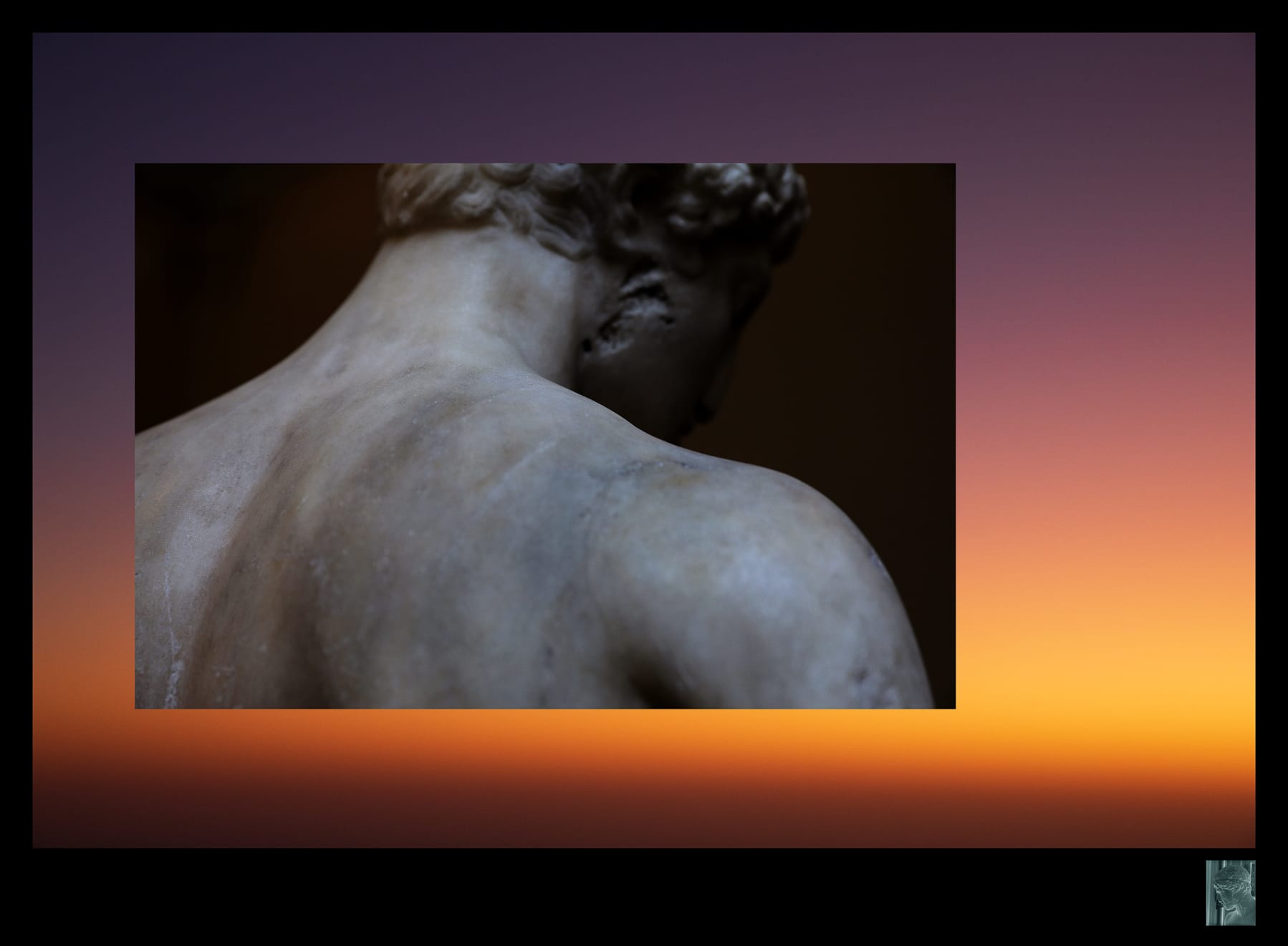Andrew Hazewinkel
Photographic archives are cool places. The climate-controlled world of archives prioritises (in archive
speak) the information carrier. In the photographic dimension this means the material that supports the
image, in negative or positive states. While the archive’s facility prioritises the materiality of
photographic artefacts, what drives the most archivists (or so it seems to me) is the image itself and how
it might be reimagined. The archival material at the inception of this body of work is drawn from a little
known collection, the Marshall Collection held in the archives at the British School at Rome. Modest in
scale it comprises approximately 2500 gelatin silver prints and roughly 800 gelatin dry plate negatives,
their principle subject is Greek and Roman sculpture. Marshall (1862-1928) was a scholar, a dealer of
antiquities and from1906-1928 European agent to the MET in NYC.The glass negative reproduced in
the lower margin of this photograph is one of eleven involved in the MET’s 1926 acquisition of the
subject of the central image, a 1st c. CE Roman marble copy of 5th c. BCE Greek bronze original. Seven
of the images (photographed in Marshall’s domestic setting) give us a glimpse into the personal life of
John Marshall. The other four, created in 1926 under controlled studio conditions by Roman
photographer Cesare Faraglia have stylistic and homoerotic connections with later works by R.
Mapplethorpe (1946-1989) and B.Weber (b.1946) - see additional image- The temporal distance
between the source Greek bronze and the Roman marble copy raises questions about the motivation
for making objects and where they are made for. The bronze was created to commemorate the victory
(at games) of a young man and it mostly likely stood outdoors amongst trees in a sanctuary. The
Roman version was made to satisfy an emergent Imperial Roman thirst for decorative objects to be
installed in bath-houses and in the villas of the wealthy. So why did I make this photograph? I made it
for Marshall who, through my ongoing engagement with images that he collected and commissioned, I
feel like I have got to know. We are both gay men (and I suspect we would have got along). He lived at
a time when our sexuality required codification (his archive is an entanglement of that) and although I
don’t agree with his museum politics, I understand and celebrate his desires. Thankfully the sweaty
homoerotic sensuality of this photograph no longer needs disguise.










